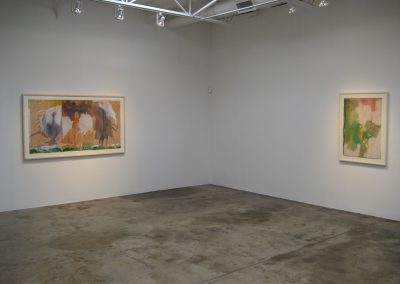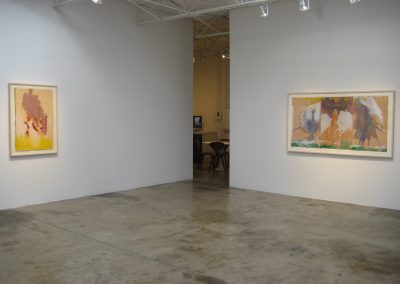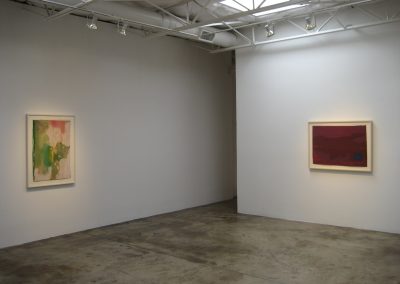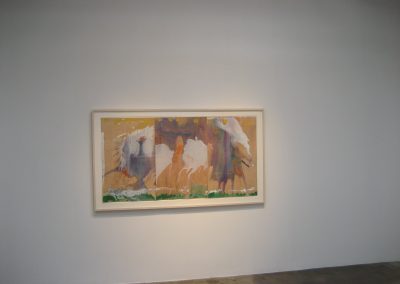Helen Frankenthaler
Woodcuts
Talley Dunn Gallery
September 10 – October 22, 2011
Like her contemporary Pearlstein, Helen Frankenthaler also re-defined the history of post-war American painting in her own way – with a radical treatment of the canvas. By pouring pigment directly onto large-scale, unprimed canvases and avoiding the gestural brushstrokes of the abstract expressionist painters, Frankenthaler achieved a transparency of color that has inspired subsequent generations of artists, including Kenneth Noland and Morris Louis.
Frankenthaler was included in an important exhibition curated by Clement Greenberg in 1964 called Post-Painterly Abstraction that defined a newer generation of abstract painting now known Color Field. Although abstract in form, the titles of Frankenthaler’s paintings suggests a representation of the natural world, and the artist’s use of color also evokes the spirit of these forms.
In printmaking, Frankenthaler also brought an innovative approach to the creation of her woodcuts and lithographs. Having made her first lithograph in 1961, the artist quickly moved onto other techniques and soon began working on large-scale woodcuts with a complex application of the many blocks required to make the multi-colored prints.
With her more recent woodcuts, Frankenthaler has utilized the Ukiyo-e style, a genre of Japanese woodblock prints first created in the 17th century that feature “pictures of the floating world,” a fleeting world of sensual and natural pleasures separate from the world of the everyday. With the Ukiyo-e style, scenes of beautiful landscapes and the world of the geisha and kabuki are commonly featured.
Geisha, Japanese Maple, and Snow Pines all employ a color palette and evanescent quality that evoke the graceful sense of their subjects. Using a twenty-three or sixteen color woodcut process with more than eight printing blocks, the prints achieve a depth and trueness of color that is rarely achieved with this process.
Helen Frankenthaler was born in New York City in 1928, and she earned her degree at Bennington College in Vermont in 1949 and later studied with Rufino Tamayo. Her work has been the subject of several retrospective exhibitions, including a 1989 retrospective at the Museum of Modern Art in New York. Her work has been exhibited worldwide since the 1950s with more than 150 solo exhibitions. Frankenthaler’s artwork can be found in the permanent collections of The Art Institute of Chicago, Brooklyn Museum, the Cooper-Hewitt, National Design Museum, Smithsonian Institution, New York, the Corcoran Gallery of Art, Washington DC, Dallas Museum of Art, the Solomon R. Guggenheim Museum, The Israel Museum, Jerusalem, the Ikawki City Art Museum, Japan, the Johannesburg Art Gallery, South Africa, the Kemper Museum of Contemporary Art, Kansas City, the Los Angeles County Museum of Art, The Metropolitan Museum of Art, the Modern Art Museum of Fort Worth, the Musée Nationale d’Art Moderne, Centre Pompidou, The Museum of Fine Arts, Houston, and The Tate Museum, London. The recipient of more than twenty prestigious awards, Frankenthaler was awarded the National Medal of Arts in 2001.




